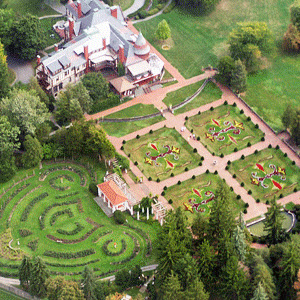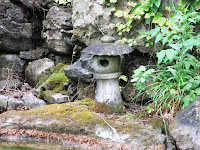There are nine (out of ten) remaining gardens open to the public. I visited because I was interested in seeing the Japanese Garden. The garden was constructed in 1906 in just six months and was designed by the Japanese landscape artists K. Wadamori.
Website: https://www.sonnenberg.org/
The Tea House was completed in 1908 and was modeled after one in Kyoto that was subsequently destroyed by fire.
In 1915 the main pool was enlarged and filled with water lilies. In addition, a small stream that was fed by a fountain just beneath the columned "Glorietta" structure at the corner of the Italian Garden (higher up and nearer the mansion) was added.
The garden is one of the only few remaining early 20th century residential gardens still in its original form and open to the public. The garden is typical of the period of "Oriental Exotica" that followed the introduction of Japanese gardens at international expositions in the late 18th century, and was adopted by wealthy Victorians into the landscapes of their private estates. As a result, the Sonnenberg Japanese garden appears to have many features associated with late 18th - early 19th century perceptions about Japanese gardens.
In fact, it appears overcrowded with features that seem "kitschy" and unrealistic. The scale appears to be off as well. Too many lanterns in a small space, several gates in close proximity, etc. Additionally, the garden was in serious need of restoration and renovation. Apparently, following the outbreak of World War II, much of the garden was vandalized. As a result, many of the items are damaged, some beyond repair.
I was impressed with the bronze Buddha, it was a nice addition, but seemed oddly placed. Around 1915 it was brought in by train and then wagon to the site, creating a stir amongst the townspeople who watched.
For novice visitors this could create a false impression of a Japanese garden, but does reflect the historic background of this early form of Japanese garden in America. The one thing I learned, is that I now know to be more careful when adding elements to my own garden. Too much stuff makes it "kitschy." Zen-like simplicity is the way - less is always more.















